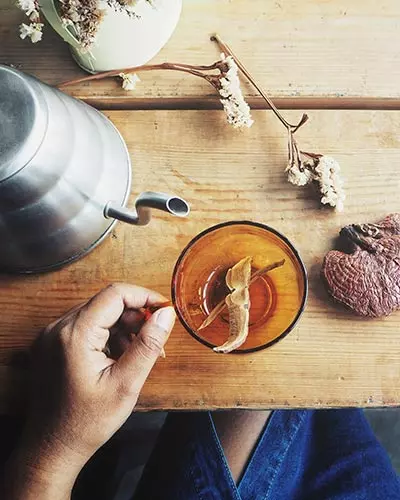Today marks International Women’s Day, a global day celebrating the social, economic, cultural, and political achievements of women around the world. People around the world use this day as a chance to reflect on the variety of contributions women have made over time. So with this in mind, we felt it was only fitting to discuss how women of the past and present impacted our understanding of fungi.

History of Mushrooms and Women
While men often dominate the narrative of the past, research illuminates women’s existence in contributing to mycology since the beginning of time. During the hunting-gathering period, women were responsible for passing down knowledge on mushrooms. This was due to their role as forgers for food and medicinal herbs.
Of course, women’s involvement with mushrooms went beyond their roles as wives and mothers. Their contributions to the scientific study of mushrooms date as far back as the 19th century. A recent journal article discovered over 43 women who published scientific literature on fungi during the 1800s, but this was only the beginning for women mycologists.
Women Fascinated by Mushrooms
Beatrix Potter (1866 – 1943)
Potter is one of the most well-known women mycologists of the past. While many remember her as an author of the children’s book entitled The Tale of Peter Rabbit, she had a passion for observing fungi. This passion inspired her to create beautiful drawings depicting fungi during her early twenties.
As she got older, she began collecting mushroom specimens and observing them under her microscope. While Potter’s scientific theories were never recognized by her male colleagues, she continued to observe and document her studies on mushrooms and their reproduction. Now Beatrix Potter’s illustrations are renowned, and she has gained recognition for her contributions to mycology.
Elsie Maud Wakefield (1886 – 1972)
Elsie Maud Wakefield (1886 – 1972) – A contemporary of Potter, Wakefield was a scientist who served as the Head of Mycology at Kew. She began her career as a low-level mycologist at the Royal Botanical Gardens, Kew after attending Somerville College, Oxford. She stayed there for over forty years and focused her studies on trying to understand the fundamentals of fungal sexuality.
Her passion for mushrooms led her to travel to Barbados where she spent six months studying tropical fungi and diseases of tropical crops. While she did not publish much of her research, Wakefield spent most of her career focusing on phylogenetic speculation and taxonomic innovation to impact the study of mycology.
Modern Women Mycologist
Flash forward to today and women are still making their mark when it comes to the study of mushrooms. One example is from Katharina Unger and Julia Kaisinger who discovered a new mushroom called FU that could reduce the amount of plastic in existence. This mushroom’s story began when the two scientists decided to expand on another researcher’s studies. He had found a mushroom in Ecuador that enjoys digesting polyurethane, a component of plastic.
To accomplish this task, these two female scientists began by identifying copious amounts of mushrooms that survive by consuming plastic. Soon they figured out a way to use two types of mushrooms, Pleurotus ostreatus aka the oyster mushroom, and an inedible mushroom called Schizophyllum commune, to decompose plastic. The combination of these two mushrooms led to FU which grows by feeding off plastic.
 Women’s Future Contributions to Mycology
Women’s Future Contributions to Mycology
A US National Library of Medicine States article highlights how even today “women are involved in every stage of mushroom utilization from collection to processing and marketing.” Even in less developed parts of the world, women contribute to the study of mushrooms by being the experts regarding “local knowledge” of mushrooms. So whether you’re a female scientist or fanatic of mushrooms, remember women can and will continue to impact the world of mycology.
Aloha Medicinals Supports Women’s Role In Mushroom Development
Aloha Medicinals is excited to see what future contributions women will make to the world of fungi. As an equal opportunity employer, we have many men, women and people who support our goal of providing you with the most potent and pure medicinal mushroom products.
 Women’s Future Contributions to Mycology
Women’s Future Contributions to Mycology
